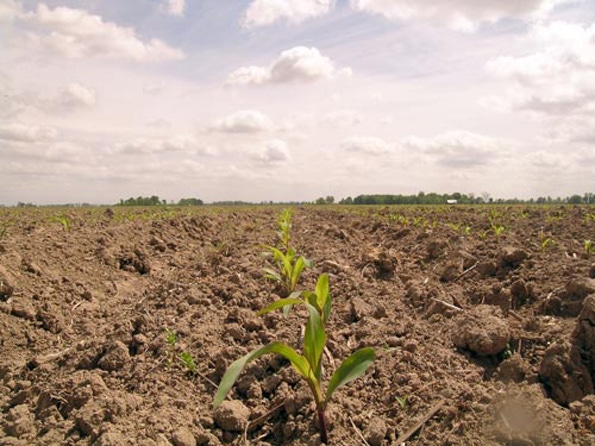
Prospects for an early-planted U.S. corn crop are fading quickly and the extended outlook is for more cold, wet weather in the Midwest, but it’s still too early to suggest significant shifting from corn to soybeans, according to grain analyst Mike Krueger of The Money Farm, speaking at the Minneapolis Grain Exchange press briefing on USDA’s Prospective Plantings and quarterly grain stocks reports.
In its March 31 plantings report, which was based on surveys taken from 84,000 producers during the first two weeks of March, USDA projected more soybean acres than the trade expected and fewer corn acres. “In corn, the average trade guess was 92.7 million acres compared to 95.4 million acres last year,” Krueger said. “This morning’s USDA number came in at 91.7 million acres, a million acres below trade expectations.
USDA will release a final estimate of planted acreage on June 30.
Krueger said farmers in large corn-producing states will likely plant close to the same corn acres they planted in 2013. “But in fringe states, acreage is down. North Dakota is down to about 900,000 acres and South Dakota is down about 400,000 acres. That’s where you would expect to see farmers slipping away from corn, especially with the strength in soybeans and the recent strength in the wheat markets as well.”
One benefit of the delayed spring might be increased availability of fertilizer, “particularly for corn because of the late openings of the rivers and other transportation issues. But I think it’s a little too early to say that people are going to start moving away from corn. They may start shifting to earlier-season hybrids, which may have a reduced yield potential.”
According to USDA’s quarterly stocks report, corn stocks in all positions on March 1, 2014, totaled 7.01 billion bushels, up 30 percent from a year earlier, but about 100 million bushels below expectations. “I think this means that USDA will have to trim ending stocks number for corn again in their April 9 supply and demand report.”
Krueger noted that exports and ethanol numbers in corn “are pretty solid. My assumption is that feed consumption was stronger than anticipated because we had a slight increase over expectations in wheat supplies.”
USDA estimated soybean plantings for 2014 at 81.5 million acres, 5 million acres more than last year.
USDA’s estimate of quarterly soybean stocks came in a little higher than what the trade was expecting, Krueger said. “The trade expected to see 989 million bushels of soybeans, but the number came in at 992 million bushels. That compares to 998 million bushels a year ago. As we know, the old crop soybean situation is super tight. Exports have been stronger-than-expected and despite all the talk about big cancellations from China, we haven’t seen any yet, and we continue to load out big numbers every week.”
Analysts were thinking that USDA would increase the size of the 2013 soybean crop and add some stocks back into the equation. “They didn’t do that,” Krueger said. “It means they do have a problem coming to the April 9 supply and demand report. They’re going to have to somehow balance soybean supply.”
Old crop soybeans have been trading around $14.60 because of the tightness in the market, while new crop soybeans have traded around $11.80.
Combined corn and soybean acreage is expected to be around 173.2 million acres, compared to 171.9 million last year, an increase of 1.3 million acres.
Krueger says once the acreage numbers are firmed up, “the focus will turn to weather and the potential for yields. I think it’s also important to keep in mind that it’s really the yields that make the big difference in the production equation. A 5-bushel to 10-bushel swing in corn yield is a lot more significant swing than a 1 million- or 2 million-acre swing in acreage estimates. The same holds true for the soybean market.”
USDA’s all-wheat acreage estimate was about 200,000 acres less than expected, according to Krueger.
Krueger said that wheat stocks will likely tighten up in the short term. “Several months ago, USDA had projected higher imports for the United States because of the Canadians record all-time wheat crop. But their logistics have been so bad that this is not going to happen. In the end it means that hard red spring wheat supplies are going to tighten up.”
However, those Canadian wheat stocks aren’t going away, noted Krueger, and could factor in again once transportation issues are resolved.
About the Author(s)
You May Also Like






